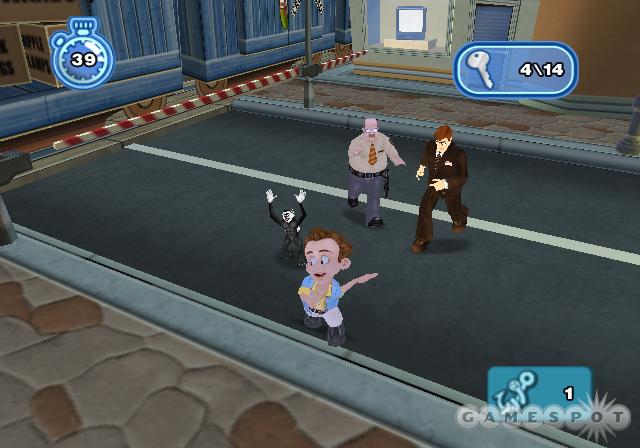Leisure Suit Larry: Magna Cum Laude Designer Diary #4
Lead Designer Duncan McPherson explains how the game's hilarious conversation system came to be.
Though the Leisure Suit Larry games have traditionally been bawdy adventures where the goal was to point and click your way into various women's affections, that will change when Leisure Suit Larry: Magna Cum Laude is released later this year. As the first Larry game in eight years, Magna Cum Laude is being geared toward the console crowd, and the emphasis is less on solving tricky puzzles and more on traditional console gameplay. Here's how it works: When Larry meets a college lass, he'll have to navigate through a series of minigames to score. The most common of these is the conversation minigame, where you'll have to steer a male reproductive tadpole around obstacles to hit a series of icons that determine which direction the conversation will go. It may sound a bit confusing, but it's wickedly hilarious in action. Thankfully, Duncan McPherson, the game's lead designer, tells us a bit more about how the conversation system came about in the latest edition of our designer diaries.
The Fine Art of Conversation
By Duncan McPhersonLead Designer
Long have game aficionados lamented the lack of humorous games. Gamers have also bemoaned the fact that so many titles lack any real character interactions. Of course, this was at the forefront of our collective mind when we started to create the newest Leisure Suit Larry game. As a team, we loved both the humor and the interactions in the early Larry games and we realized from the start that we had to somehow integrate both comedy and conversation into this latest edition of the Larry license.
Dialog trees were a staple of any game that relied on character interactions. They're tried, true, and dead boring. Yes, yes, I can choose the funny thing to say and cause an equally funny reaction in the world. However, by seeing the full "funny" line and by being able to simply play the conversation until all possibilities are exhausted, interactions seem detached and lifeless. The solution was as obvious as it was difficult to implement: inject gameplay into the conversation itself. This would have the three-fold effect of keeping players on their toes during interactions, tying Larry's conversational abilities to the player's level of skill, and maximizing the humorous bits by refraining from exposing the joke beforehand.
The first design instinct that Tom Smith, design director, had was to make a conversation game that emulated the mechanics of a rhythm game, like PaRappa the Rappa. The idea was deceptively simple: the player is shown a series of buttons and has to repeat the pattern within a limited timeframe. A bouncing ball traveled along a line of Larry's dialog. As the ball hit the line, the player would have to press the right button at that moment in order to make Larry say the best thing possible. Missing a button press or hitting the wrong button would cause Larry to say bad things. Dialog would be set up something like this:
| "Hey______, you look______." | ||
| [correct] | (baby) | (beautiful) |
| [wrong] | (stupid) | (ugly) |
| [also wrong] | (sex kitten) | (hungry for lovin') |
While this was an interesting and unique idea, one of the primary problems with it was the fact that a rhythm game without a clear rhythmic component doesn't feel right on the player's side. Also, making the rhythm itself too complex would ultimately take the player's attention away from the conversation, causing the player to miss interesting or important pieces of information. Still, we knew that this idea had significant merit. Adding gameplay to conversations had the potential to be brilliant.
After multiple meetings and discussions on the merit of one gameplay technique over another, the leads brainstormed a steering mechanic that we now use as the backbone of our conversation game. Again, the concept is deceptively simple: the player drives an icon down a series of lanes in an attempt to hit a companion icon that will trigger the right line for Larry to say. Hitting the wrong icon or an obstacle in the path will cause Larry to do something funny, but ultimately insulting or embarrassing. Hitting the right icon also causes Larry to say something funny that drives the conversation--and Larry's relationship with the character--forward. The end result not only contains the gameplay we hoped to integrate, it also feels organic to the conversations themselves.

Our conversation system is a fun and interesting way of propelling the narrative, keeping the player involved on multiple levels, and getting the player to enjoy a good laugh. One of the most important lessons we've learned as we've created this game is that opportunities for creative and innovative design are everywhere.
Speaking of development (note the graceful segue!), it won't be long until the public gets a chance to jump into this wonderful world we've built. It is my sincere hope that all of you enjoy playing the game as much as we've enjoyed making it.
Got a news tip or want to contact us directly? Email news@gamespot.com
Join the conversation